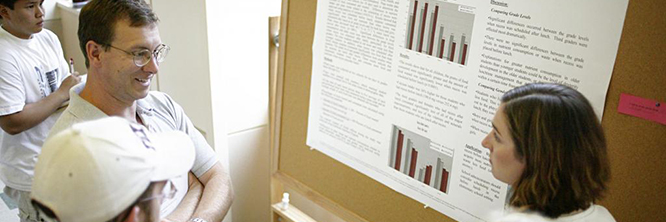The Monsters Within: An Analysis of Minorities in the Horror Film
Document Type
Poster
Event Website
https://source2022.sched.com/
Start Date
16-5-2022
End Date
16-5-2022
Keywords
inclusivity, horror, representation
Abstract
Horror films are watched by many regardless of gender, race, or sexual orientation. However, the horror film has been traditionally built off negative stereotypes of minorities. There has been a lack of positive representation for women, LGBTQ+ individuals, and Black individuals. The purpose of my research is to find the gap between horror media consumed by society and its exploration of topics such as racism, sexism, and homophobia. I aim to discuss the relevance and importance of representation. My research question asks: how have horror films portrayed minority groups and their identities during the 1970-present and how have these portrayals evolved? To answer this, I chose eleven horror films of varying sub-genres to analyze. I read literature that formed an academic foundation to build my thesis upon. My approach of using a wide array of films as well as using queer, critical race, feminist, and film theory provides a diverse perspective. Minoritized peoples and their representation in horror now produce counter-narratives that diverge from mainstream horror depictions such as the all-white, heterosexual, male-dominated casts. The horror genre has engaged in social commentary, but now it is clear that these films encourage the audience to think about trauma, society, and how we can change. My research importantly addresses instances of progress in horror media and makes social injustices and prejudices explicit so one can fight against them. As I continue in higher education, I aim to further this research and encourage those who make media to be inclusive.
https://cwu.hosted.panopto.com/Panopto/Pages/Viewer.aspx?id=63756e14-4ba9-4df2-8d8f-ae94011c6a4e
College of Arts and Humanities Presentation Award Winner.
Recommended Citation
Kropla, Julianna, "The Monsters Within: An Analysis of Minorities in the Horror Film" (2022). Symposium Of University Research and Creative Expression (SOURCE). 11.
https://digitalcommons.cwu.edu/source/2022/CAH/11
Department/Program
English Language and Literature
Additional Mentoring Department
Women's, Gender and Sexuality Studies
Additional Mentoring Department
McNair Scholars Program
The Monsters Within: An Analysis of Minorities in the Horror Film
Horror films are watched by many regardless of gender, race, or sexual orientation. However, the horror film has been traditionally built off negative stereotypes of minorities. There has been a lack of positive representation for women, LGBTQ+ individuals, and Black individuals. The purpose of my research is to find the gap between horror media consumed by society and its exploration of topics such as racism, sexism, and homophobia. I aim to discuss the relevance and importance of representation. My research question asks: how have horror films portrayed minority groups and their identities during the 1970-present and how have these portrayals evolved? To answer this, I chose eleven horror films of varying sub-genres to analyze. I read literature that formed an academic foundation to build my thesis upon. My approach of using a wide array of films as well as using queer, critical race, feminist, and film theory provides a diverse perspective. Minoritized peoples and their representation in horror now produce counter-narratives that diverge from mainstream horror depictions such as the all-white, heterosexual, male-dominated casts. The horror genre has engaged in social commentary, but now it is clear that these films encourage the audience to think about trauma, society, and how we can change. My research importantly addresses instances of progress in horror media and makes social injustices and prejudices explicit so one can fight against them. As I continue in higher education, I aim to further this research and encourage those who make media to be inclusive.
https://cwu.hosted.panopto.com/Panopto/Pages/Viewer.aspx?id=63756e14-4ba9-4df2-8d8f-ae94011c6a4e
College of Arts and Humanities Presentation Award Winner.
https://digitalcommons.cwu.edu/source/2022/CAH/11

Faculty Mentor(s)
M. O'Brien